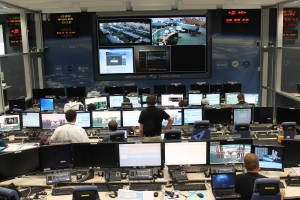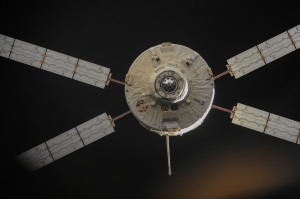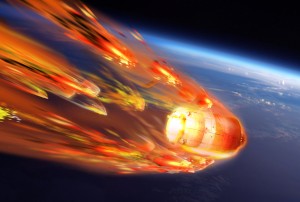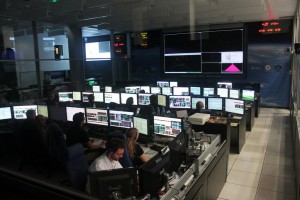Jean-Michel Bois from the ATV Control Centre shares the operations perspective on yesterday’s decision to go for a normal ATV-5 reentry:
On Tuesday 3 February, ATV’s onboard software detected an anomaly on power chain 4. According to its protocol, it isolated the full chain: the rechargeable battery 4, the equipment managing the power chain (called Power Control and Distribution Unit or PCDU) and all elements of the ATV subsystem connected to this power line. The ATV is designed to be robust to such a failure, one power chain isolation has no impact on ATV’s function, but obviously several subsystem redundancies were switched off (one of two videometers, one of two GPS transceivers, one of four Propulsion Electronic Equipment and so on….).
After assessment of the telemetry received before and after the isolation, the ATV team had a better picture of the potential causes. On Saturday 7 February a procedure prepared and validated by ESA, Airbus Defence and Space and CNES was played out to better understand the issue, to try several commands to recover the power chain and if not fully successful, to power the chain 4 and its connected subsystems at least by the energy coming from the International Space Station.
A briefing between operators and experts had confirmed an issue with rechargeable battery 4 which was impossible to reconnect to the PCDU (maybe a fuse has burned out). But the test confirmed that as long as ATV can receive power from the International Space Station, the previously disconnected ATV subsystems could be powered again thanks to the direct connection to the International Space Station.
The consequences for ATV operations
The battery is mandatory in free flight to bridge power between two periods of sunlight when ATV receives its power directly from its Solar Panels that delivers energy to the subsystems and recharges the battery for the next eclipse.
The situation for ATV was stabilized by the operations on Saturday and, in coordination with our Space Station partners, it was decided to maintain the ATV undocking as planned on 14 February.
But this confirmed failure could also have an impact on the safety assessment of the reentry.
All studies showed that the classical reentry could be safely ensured with only three power chains.
The shallow reentry
For ATV-5, the International Space Station community requested that the ATV teams study and perform “shallow” reentry if possible to collect data on a non-classical reentry, a similar reentry to what could be in the future the reentry of the International Space Station. The space community was really interested by having these inputs to consolidate reentry models and numerous institutes and agencies, including ESA and CNES coordinated forces with NASA and the ATV project to get a maximum of correlated observations, either via recorders inside ATV itself, observations from ground or observations via airplanes.
To cope with the safety reentry requirements, ATV-5 had to burn any extra fuel not used to maintain the International Space Station’s orbit or by ATV-5 itself during docking (we had a fantastic docking, which required less fuel than foreseen in case of contingency). The objective was to arrive at a quantity of propellant that allowed us to perform a safe reentry while minimizing any explosion when the fuel tanks would destroy on reentry. In addition to this, the date of 27 February was identified as the soonest time for best observations (better orbit, in the night, …).
These constraints lead to a strategy whereby we would put ATV-5 into a “parking” orbit after the undocking, perform ATV manoeuvres to burn the extra fuel and wait for the right time for deorbit.
Cancellation of the shallow reentry
With ATV-5 already relying on a part of its redundant systems, the safety dossier for this shallow reentry had to be reassessed. Several risk mitigation measures were analysed, some of them included our Station Partners to stay longer attached to International Space Station. None was conclusive.
In view of the new risks created by this power issue and Space Station constraints including the need for a free docking port before 15 February to welcome a Russian Progress cargo, and according to Space Station authority recommendation to put the collection of shallow reentry data as second priority and to undock and reenter as soon as possible, ESA management decided to not perform the shallow reentry and stick to a standard ATV reentry as soon as possible.
The reentry of ATV5 is now planned on Sunday 15 around 18:00 UTC





 Automated Transfer Vehicle page
Automated Transfer Vehicle page ATV blog archive
ATV blog archive
Discussion: no comments